Create a ProfessionalLogo for E-commerce 🛍️in 2 Minutes
Generate a trustworthy, memorable logo for your online store instantly. Trusted by 8,000+ e-commerce brands, Shopify stores, and Amazon sellers. No design skills needed.
✨ Join 8,000+ online stores who created their logos with AI
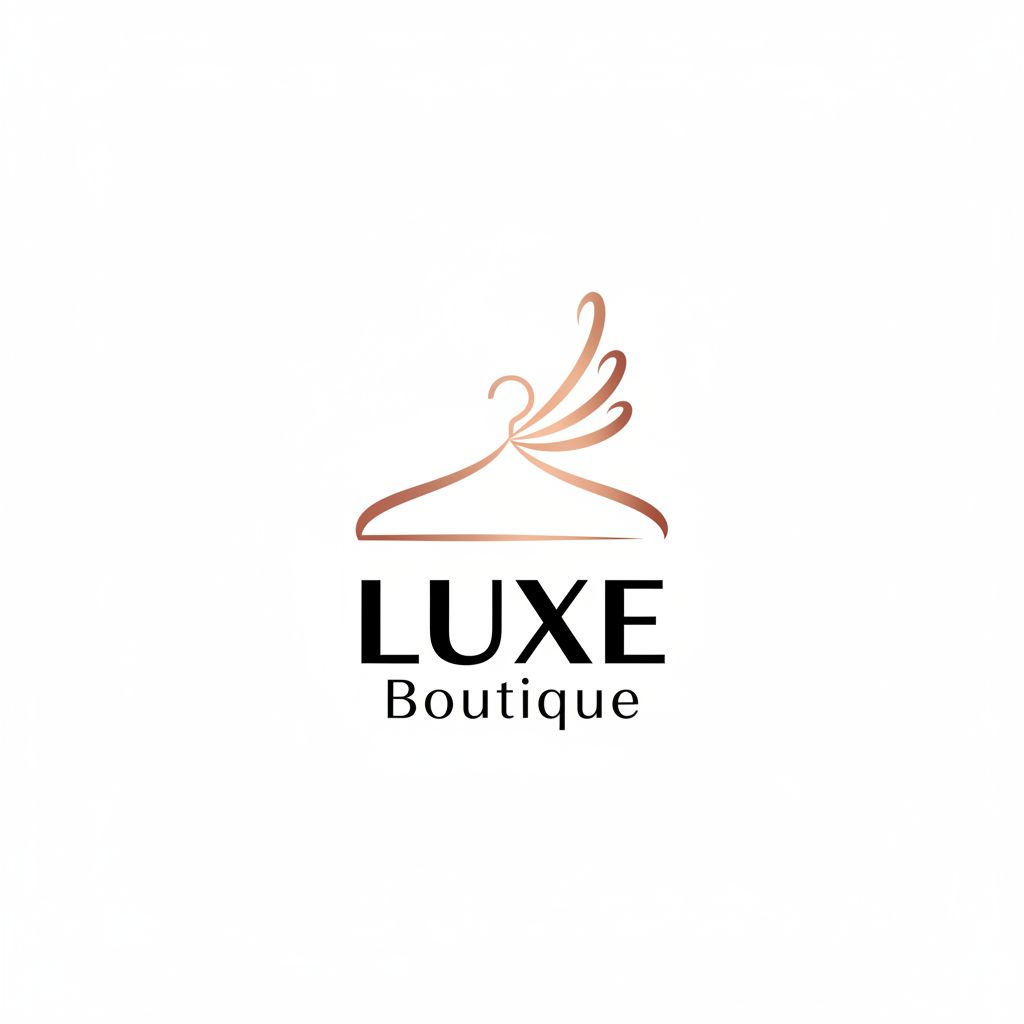


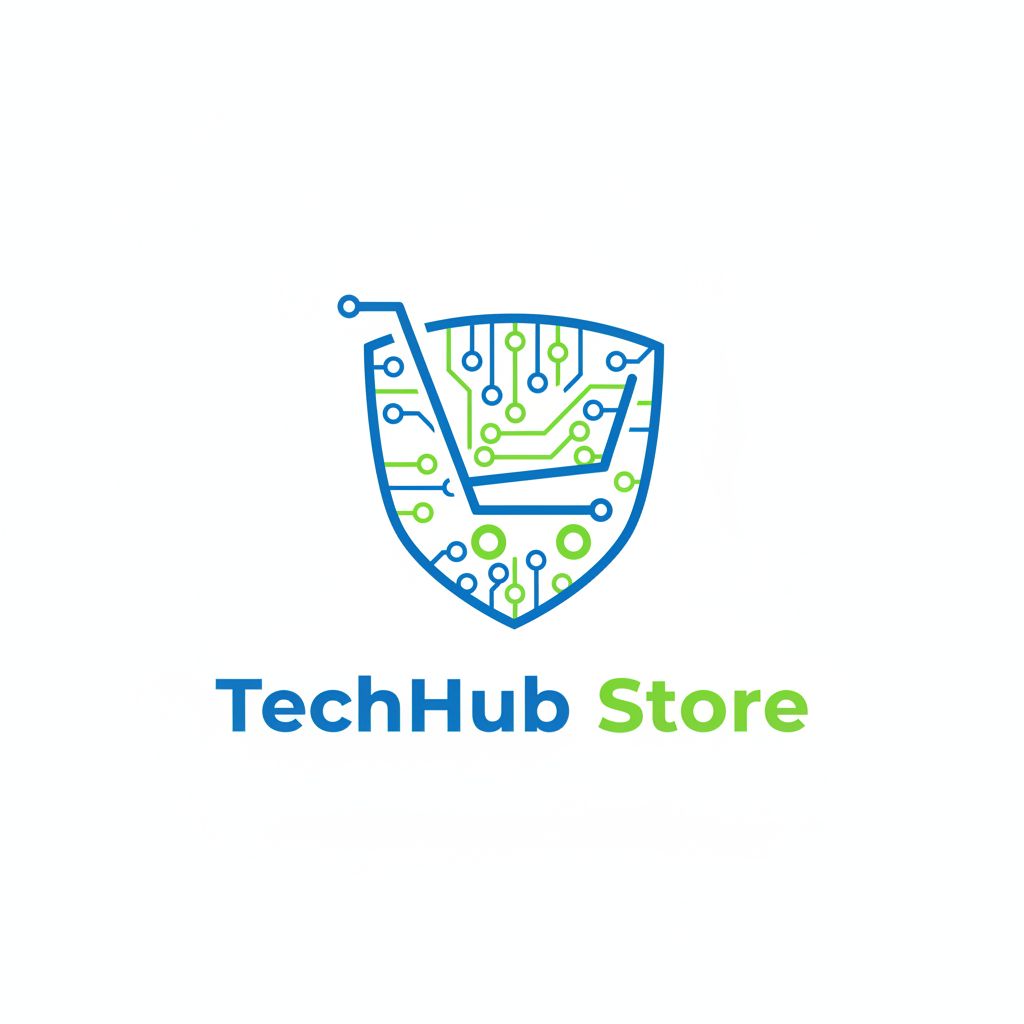

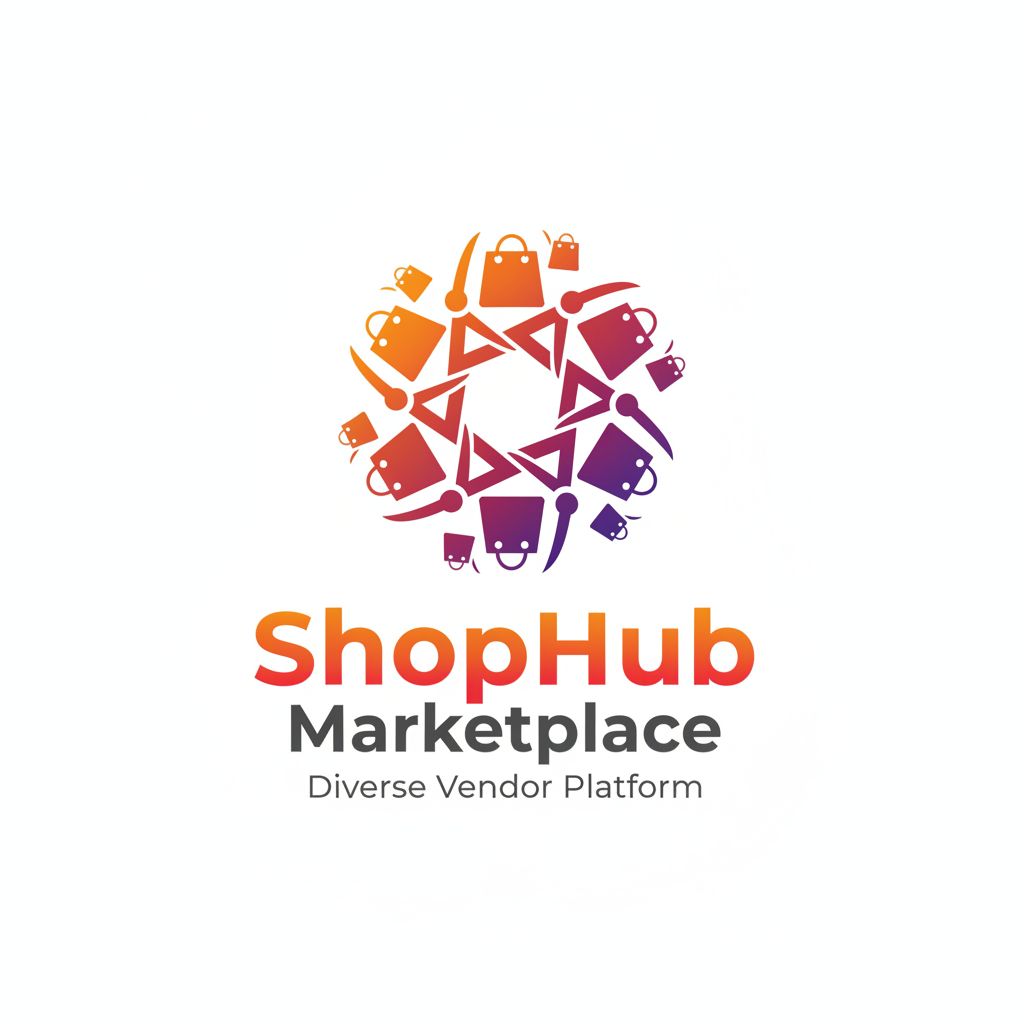
Why E-commerce Logos Need Special Attention
Online shopping is built on trust. Your logo is the face of your brand in a digital world where customers can't touch products or meet you in person. A professional logo signals legitimacy, quality, and trustworthiness—critical factors that directly impact conversion rates.
Building Instant Trust
67% of online shoppers say they won't buy from a website that looks unprofessional or outdated. Your logo is the first thing customers see—on your site, social media, and marketplace listings. A professional logo signals that you're a legitimate business, not a scam.
📊 Online stores with professional branding convert 3x better than those with amateur logos.
Mobile-First Recognition
Over 70% of e-commerce purchases happen on mobile devices. Your logo needs to be instantly recognizable at tiny sizes—social media profile pics, mobile app icons, and payment confirmation screens. If customers can't recognize you, they can't remember you.
📊 Mobile shoppers decide to trust a brand in under 3 seconds based on visual cues.
Standing Out in Crowded Marketplaces
Whether you're selling on Amazon, Etsy, Shopify, or your own site, you're competing with millions of other sellers. A memorable logo helps you stand out in search results, product listings, and social media feeds. Generic logos get ignored.
📊 Products with recognizable brand logos sell for 20-50% higher prices than generic equivalents.
Omnichannel Brand Consistency
Your logo appears everywhere: your website, social media, packaging, email marketing, ads, invoices, and customer support. Consistent branding across all touchpoints increases customer recall by 80% and builds trust faster than anything else.
📊 E-commerce brands with consistent visual identity see 23% higher revenue growth.
E-commerce Logos Created With AI
Professional results in minutes, not weeks
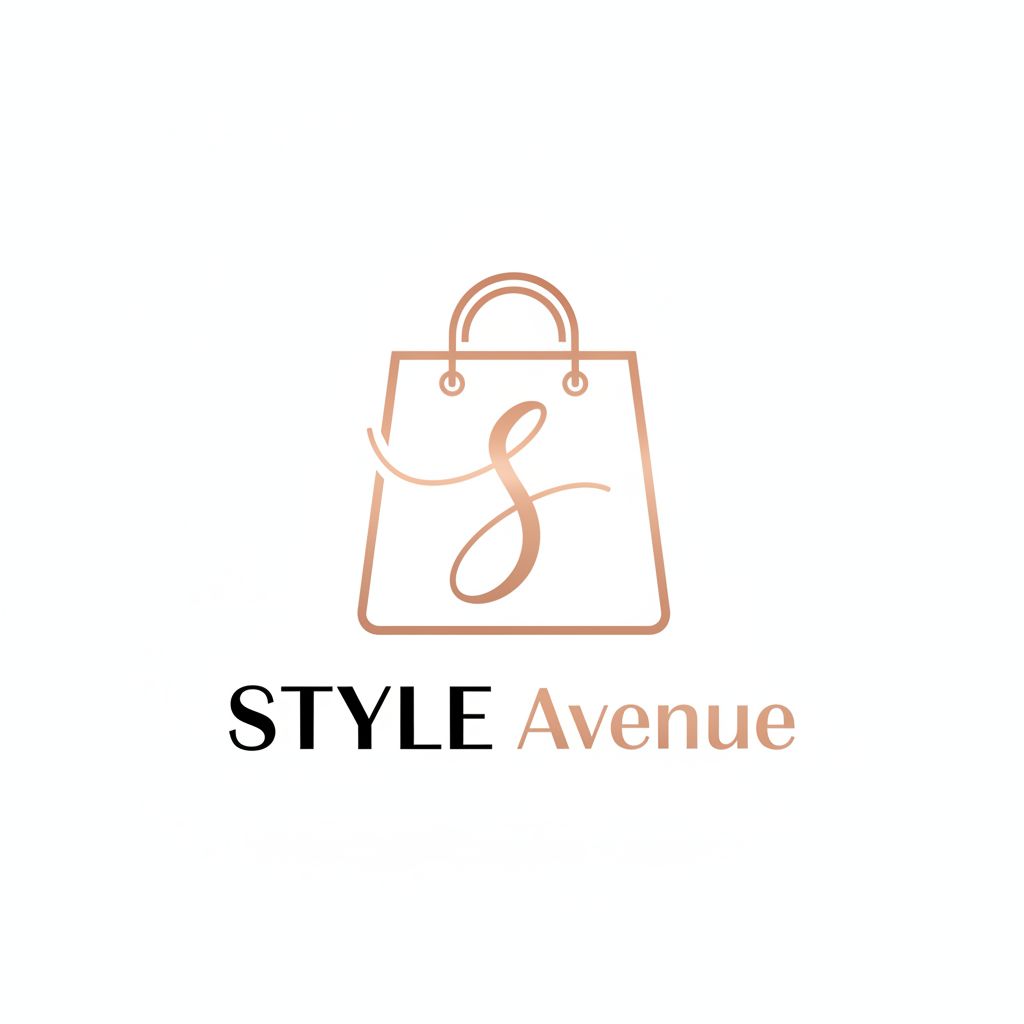

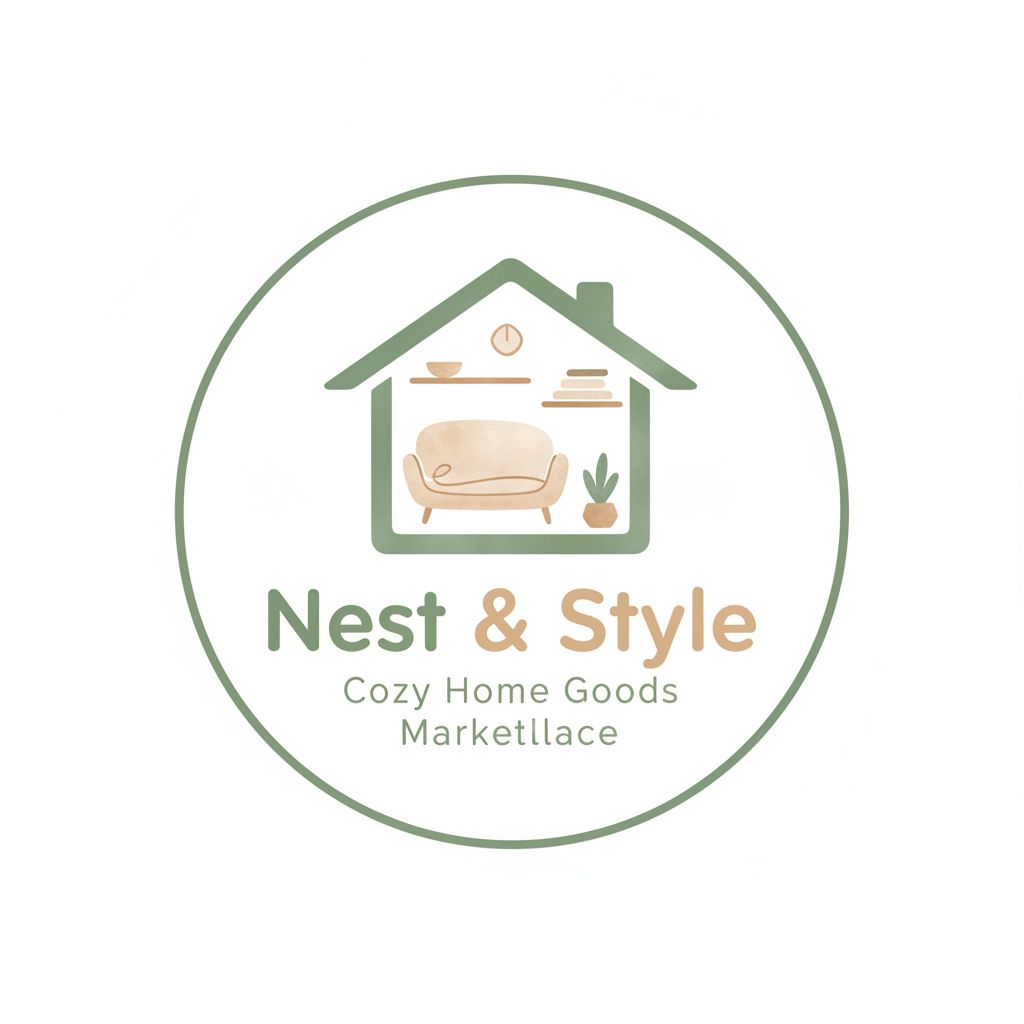

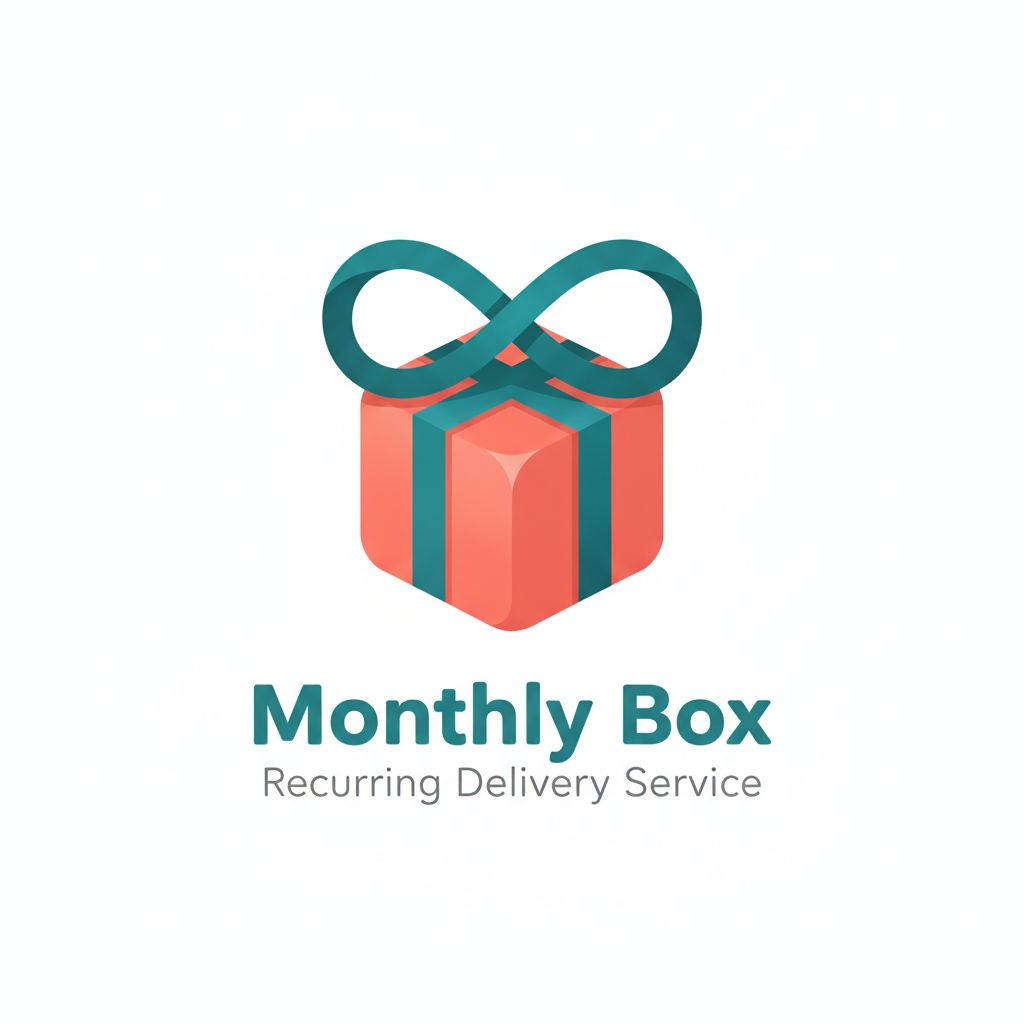
8 Essential Design Principles for E-commerce Logos
Follow these proven principles used by successful e-commerce brands from small Etsy shops to major retailers.
1. Memorable & Simple
E-commerce customers see hundreds of brands daily. Your logo needs to stick in their minds after one glance. Think Amazon's smile, Nike's swoosh, or Warby Parker's clean wordmark—all incredibly simple yet unforgettable.

✅ Good Examples:
Bold, simple shapes; clean typography; one strong visual element; easy to describe verbally
❌ Bad Examples:
Overly detailed illustrations, multiple competing elements, complex patterns, hard to remember
🎯 Why This Matters:
If customers can't remember your logo, they can't find you again. Simple = searchable.
💡 Pro Tip:
The 'blink test': Show your logo for 3 seconds, hide it, and ask someone to draw it. If they can't, simplify.
2. Trust-Building Design
Online shoppers are skeptical by nature—they've been burned by scams. Your logo needs to communicate professionalism, reliability, and legitimacy. Avoid anything that looks cheap, playful (unless that's your niche), or rushed.
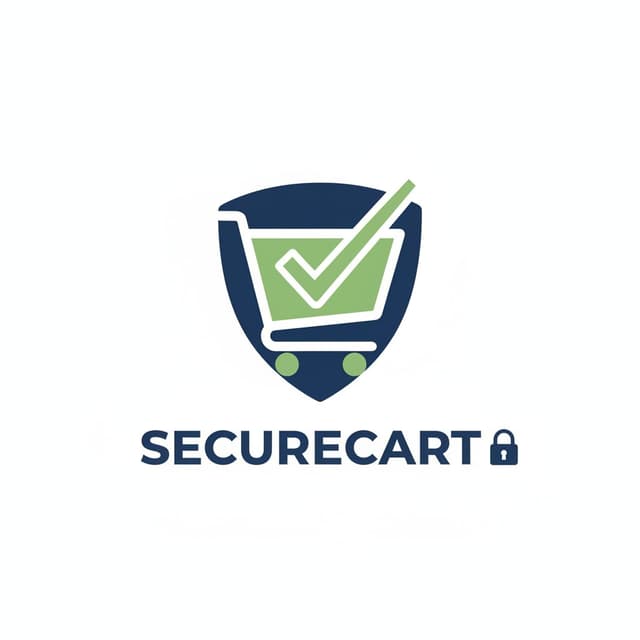
✅ Good Examples:
Professional typography, balanced composition, quality over quantity, polished appearance
❌ Bad Examples:
Clip art, overly trendy styles, inconsistent elements, looks 'homemade'
🎯 Why This Matters:
Trust = conversions. A professional logo is your first step in building customer confidence.
💡 Pro Tip:
Would you buy from a store with this logo? If you hesitate, your customers will too.
3. Product Category Clarity
Your logo should give subtle hints about what you sell. Fashion brands look different from tech stores. Food businesses feel different from beauty brands. Match expectations while standing out.

✅ Good Examples:
Style appropriate to your niche, visual hints about product type, meets customer expectations
❌ Bad Examples:
Confusing category signals (tech style for food brand), completely generic, no personality
🎯 Why This Matters:
Customers need to instantly understand what you sell. Confusion = lost sales.
💡 Pro Tip:
Study 10 competitors' logos. Your logo should fit the category but not blend in completely.
4. Mobile & Social Optimized
Your logo lives on Instagram profile pics (110x110px), mobile icons, and tiny product listings. It must work at extreme small sizes without losing recognition. Test ruthlessly on actual devices.
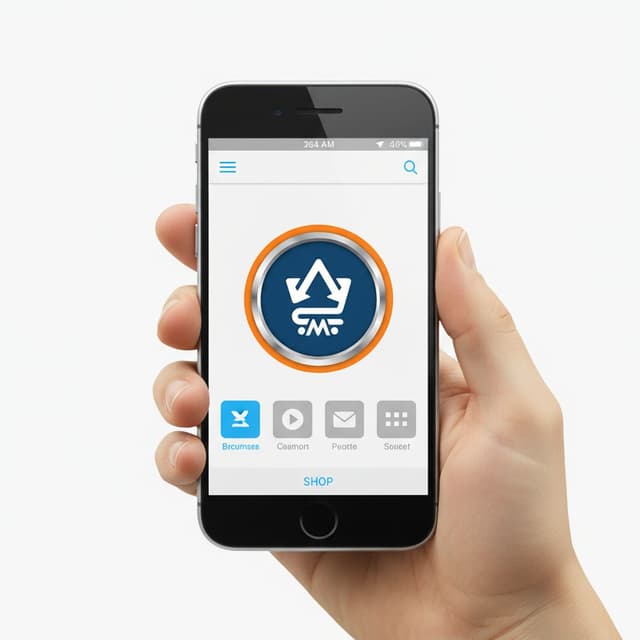
✅ Good Examples:
High contrast, bold shapes, readable at 64x64px, recognizable when tiny
❌ Bad Examples:
Thin lines that disappear, intricate details, low contrast, requires large size to work
🎯 Why This Matters:
70% of your customers will first see your logo on their phone. If it doesn't work mobile, it doesn't work.
💡 Pro Tip:
View your logo as your phone's contact icon. Still recognizable? Good. Blurry mess? Redesign.
5. Color Psychology for Sales
Color drives emotions and purchase decisions. Red creates urgency (sales!). Blue builds trust. Black signals luxury. Green suggests organic/natural. Choose strategically based on your products and target market.
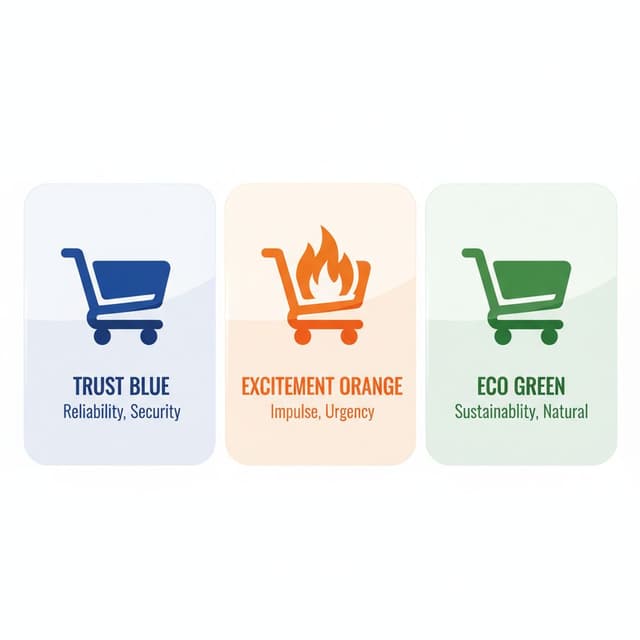
✅ Good Examples:
Colors that match product category, evoke desired emotion, appropriate for target demographic
❌ Bad Examples:
Random color choices, too many colors, colors that clash with product category expectations
🎯 Why This Matters:
Color can increase brand recognition by 80% and influences 85% of purchasing decisions.
💡 Pro Tip:
Luxury products? Use black/gold. Eco-friendly? Green/earth tones. Fast fashion? Bright colors.
6. Versatile Across Platforms
Your logo appears on your website, Instagram, Amazon storefronts, email headers, shipping labels, packaging, business cards, and ads. It needs to work in square, horizontal, and vertical formats.
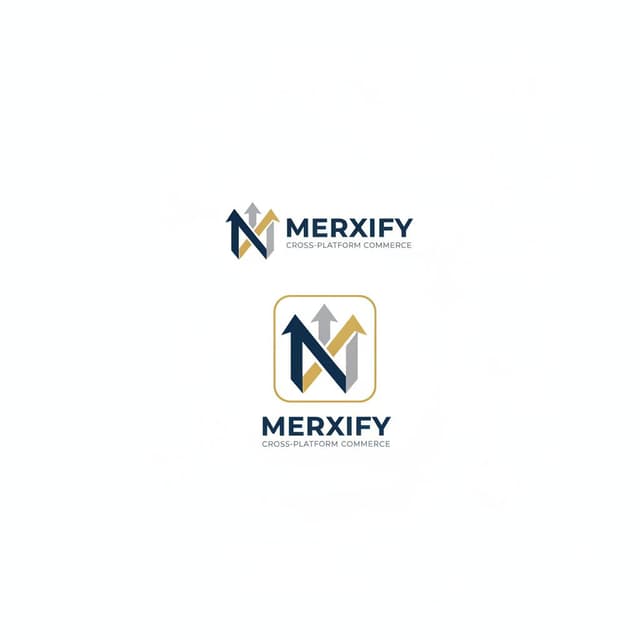
✅ Good Examples:
Works as icon alone, full logo with text, horizontal layout, square format
❌ Bad Examples:
Only works in one orientation, can't separate icon from text, breaks at different sizes
🎯 Why This Matters:
E-commerce requires more logo variations than any other industry. Plan for flexibility.
💡 Pro Tip:
Create 3 versions: icon only, icon + text horizontal, icon + text stacked. You'll use all three.
7. Timeless Not Trendy
That gradient mesh, hand-drawn font, or current Instagram trend will look dated in 18 months. E-commerce stores need logos that last 5+ years minimum. Your packaging, products, and brand equity depend on consistency.

✅ Good Examples:
Classic typography, simple shapes, proven color combinations, clean design
❌ Bad Examples:
Current design trends, overly stylized elements, dated effects, flavor-of-the-month aesthetics
🎯 Why This Matters:
Rebranding is expensive and confusing. Your logo appears on inventory, packaging, and marketing materials that last years.
💡 Pro Tip:
Look at e-commerce logos from 2015 that still work today. Notice they're all simple and classic?
8. Packaging-Ready Design
Unlike digital-only businesses, e-commerce logos need to work in print—on boxes, tissue paper, stickers, tags, and poly mailers. Your logo must print cleanly in 1-2 colors for cost-effective packaging.
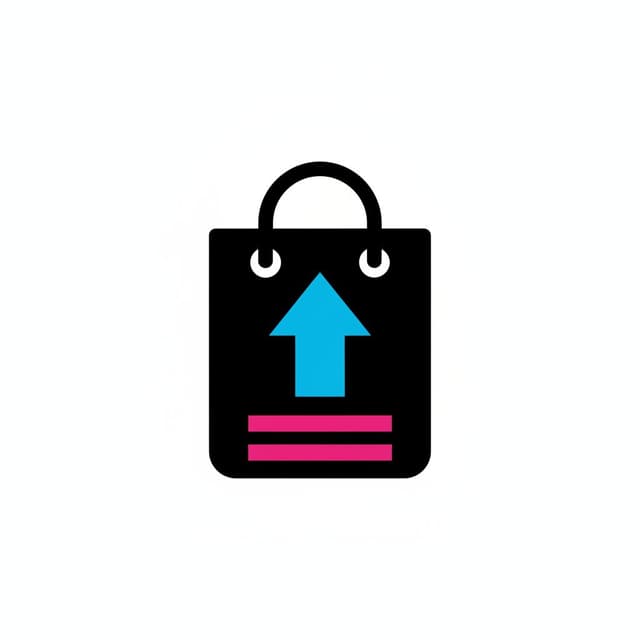
✅ Good Examples:
Works in full color and black-only, prints clearly, looks good on various materials
❌ Bad Examples:
Complex gradients, requires many colors, loses impact in black and white
🎯 Why This Matters:
Packaging is your silent salesperson. A logo that can't be affordably printed on packaging limits your brand.
💡 Pro Tip:
Convert your logo to pure black. Does it still look good? If not, simplify before you have 10,000 boxes printed.
E-commerce Logo Color Psychology: Colors That Sell
Different colors trigger different buying behaviors. Choose your palette strategically to influence purchase decisions.

Black
Luxury, Premium, Sophistication
🏆 E-commerce Examples:
Chanel, Prada, Nike, Apple, Supreme, Away Luggage
🎯 Best For:
Luxury fashion, premium products, high-end beauty, designer goods, premium tech accessories
🧠 Psychology:
Black is the color of luxury and exclusivity. It suggests high quality and premium positioning. Luxury e-commerce brands use black to justify higher prices and attract affluent buyers.
✅ When to Use:
When selling premium products ($100+), targeting affluent demographics, or positioning as luxury/designer.
❌ When to Avoid:
For budget-friendly products, kids' items, or brands focused on affordability and accessibility.
Blue
Trust, Reliability, Security
🏆 E-commerce Examples:
PayPal, Walmart, Best Buy, Dell, American Express, Shopify
🎯 Best For:
Electronics, tech accessories, general merchandise, business supplies, financial products
🧠 Psychology:
Blue is the most trusted color online. It reduces purchase anxiety and signals security—critical for online transactions where customers enter credit card info.
✅ When to Use:
When selling higher-ticket items that require trust, or when security/reliability is a key selling point.
❌ When to Avoid:
For food products (blue suppresses appetite) or when you want to create urgency/excitement.
Red/Orange
Urgency, Excitement, Energy
🏆 E-commerce Examples:
Target, Amazon (orange), Coca-Cola, YouTube, Netflix, Etsy (orange)
🎯 Best For:
Fast fashion, sales-driven stores, impulse purchase products, entertainment, food delivery
🧠 Psychology:
Red and orange create urgency and stimulate appetite/impulse. They're used in clearance sales for a reason—they trigger 'act now' emotions and increase click-through rates.
✅ When to Use:
For fast-moving inventory, impulse purchases, food products, or sales-focused stores.
❌ When to Avoid:
For luxury positioning or products requiring thoughtful consideration (expensive items).
Green
Natural, Eco-Friendly, Health
🏆 E-commerce Examples:
Whole Foods, The Body Shop, Patagonia, Seventh Generation, HelloFresh
🎯 Best For:
Organic products, eco-friendly goods, health/wellness, sustainable fashion, natural beauty
🧠 Psychology:
Green signals natural, organic, and environmentally conscious. Perfect for the growing eco-conscious consumer market. It also suggests growth, freshness, and health.
✅ When to Use:
For organic, sustainable, eco-friendly, or health-focused products. Great for wellness and natural beauty.
❌ When to Avoid:
For tech products, luxury fashion, or brands where 'natural' isn't relevant.
Pink/Purple
Feminine, Creative, Playful
🏆 E-commerce Examples:
Glossier, Benefit Cosmetics, Victoria's Secret Pink, Barbie, T-Mobile
🎯 Best For:
Beauty, cosmetics, feminine products, creative goods, youth-focused brands
🧠 Psychology:
Pink appeals to feminine markets and suggests fun, creativity, and modern femininity. Purple adds sophistication to playfulness. Both work well for beauty and creative products.
✅ When to Use:
When targeting female demographics, especially younger women, or for beauty and creative products.
❌ When to Avoid:
For male-focused products, ultra-professional services, or when targeting older demographics.
Brown/Tan
Natural, Artisan, Handmade
🏆 E-commerce Examples:
UPS, M&M's, Hershey's, many artisan/craft Etsy brands
🎯 Best For:
Handmade goods, artisan products, leather goods, coffee/chocolate, rustic/vintage items
🧠 Psychology:
Brown and earth tones suggest authenticity, craftsmanship, and natural materials. Perfect for handmade, artisan, or heritage brands that want to convey 'made with care.'
✅ When to Use:
For handcrafted products, artisan goods, vintage items, or brands emphasizing natural materials.
❌ When to Avoid:
For tech products, modern luxury, or brands wanting to appear cutting-edge.
20+ Successful E-commerce Logo Examples (And Why They Work)
Learn from top-performing online stores across different product categories.
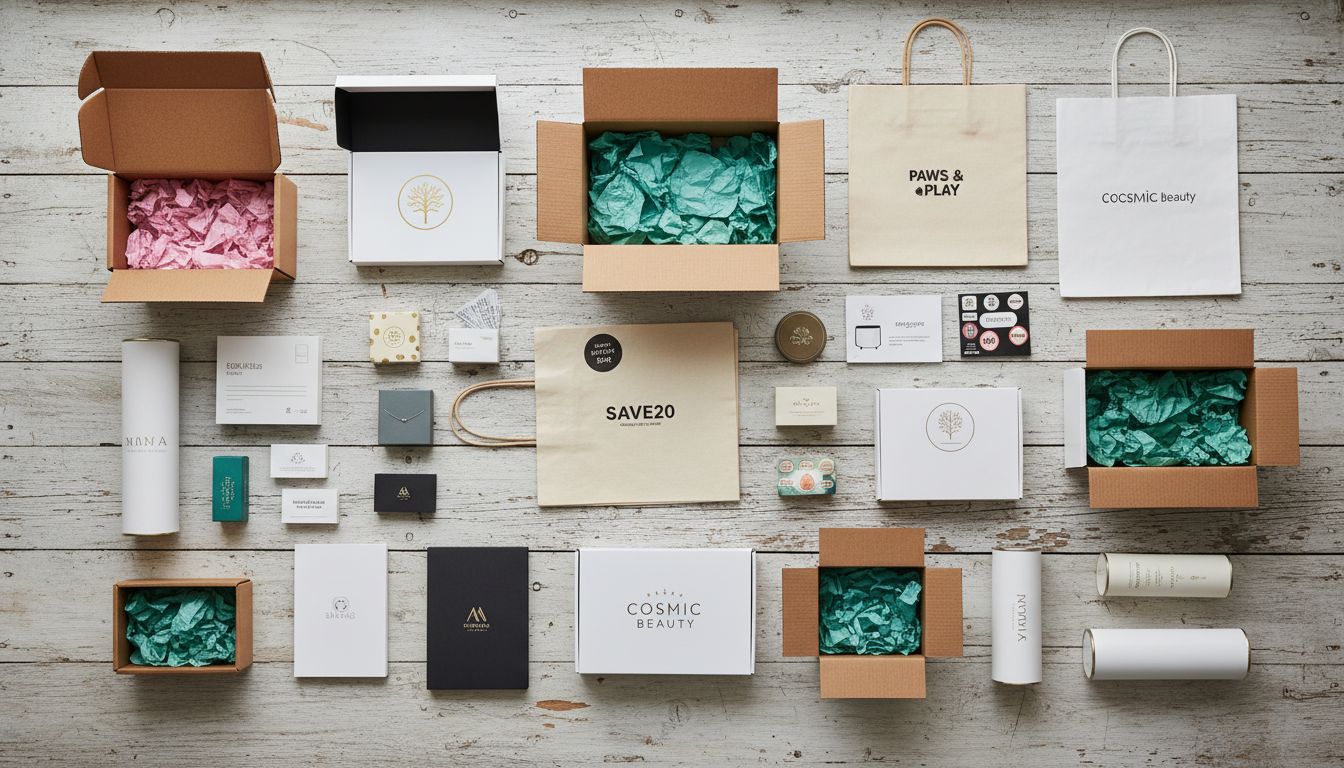
Amazon
MarketplaceThe arrow from A to Z suggests they sell everything from A to Z, and it forms a smile—customer satisfaction. Simple wordmark that works everywhere.
✅ Why It Works:
Instantly recognizable, works at tiny sizes, conveys completeness and happiness, scales perfectly
📚 Lesson:
Your logo can tell a story through clever visual design. Amazon's arrow/smile is genius.
Etsy
Handmade MarketplaceWarm orange color suggests creativity and approachability. Simple, friendly wordmark that feels handmade without looking unprofessional.
✅ Why It Works:
Perfect balance of professional and approachable, warm color invites browsing, easy to remember
📚 Lesson:
Match your brand personality. Etsy feels handmade but trustworthy—perfect for their market.
Glossier
BeautyClean, minimal black text on white/pink. Ultra-simple wordmark that screams modern, minimalist beauty. Instagram-perfect.
✅ Why It Works:
Looks amazing on packaging and social media, minimal = premium feel, perfect for millennial/Gen-Z
📚 Lesson:
Sometimes just perfect typography is enough. Glossier's simplicity is their luxury.
Warby Parker
EyewearSimple, vintage-inspired wordmark that suggests quality and heritage. Serif font feels sophisticated yet accessible.
✅ Why It Works:
Professional enough for prescription glasses, friendly enough for fashion, works on packaging
📚 Lesson:
Let typography carry your brand. Warby Parker needs no icon—the name is the brand.
Allbirds
Sustainable FashionSimple wordmark with a subtle bird icon. Natural, eco-friendly aesthetic that matches their sustainable mission.
✅ Why It Works:
Minimal = modern, eco associations are subtle not preachy, works on shoe tags and website
📚 Lesson:
Your logo should match your values. Allbirds' simplicity reflects their 'natural' positioning.
Dollar Shave Club
SubscriptionBold, masculine typography with slight vintage feel. Dollar sign integrated cleverly. Confident and memorable.
✅ Why It Works:
Masculine without being aggressive, memorable name, works in video content and packaging
📚 Lesson:
Bold typography creates bold brands. Dollar Shave Club's logo matches their confident marketing.
E-commerce Logo Do's and Don'ts
Follow these battle-tested rules for e-commerce logo success
Do These
DO: Test on actual product packaging
Print your logo on boxes, bags, and stickers before committing. How it looks on your computer vs. real packaging can be drastically different.
DO: Make it work as a social media profile pic
Your Instagram, Facebook, and Pinterest profiles will be tiny circles. If your logo isn't recognizable at 110x110px, redesign it.
DO: Consider your product category
Fashion logos look different from tech stores. Beauty brands differ from home goods. Study your niche and match customer expectations.
DO: Create both icon and wordmark versions
You need a standalone icon (for social media) and a full logo with your store name (for your website and packaging).
DO: Think about packaging costs
Complex, multi-color logos are expensive to print. Make sure your logo works in 1-2 colors for cost-effective packaging.
DO: Test for trust
Show your logo to people and ask: 'Would you buy from this store?' If they hesitate, refine it. Trust = conversions.
Avoid These
DON'T: Use generic e-commerce symbols
Shopping carts, bags, tags, and credit cards are clichés. Thousands of stores use them. Be unique and memorable instead.
DON'T: Make it too detailed
Intricate designs don't work at small sizes, on packaging, or as social profile pics. Keep it simple or lose visibility.
DON'T: Ignore mobile shoppers
70% of online shopping happens on mobile. If your logo doesn't work on a phone screen, you're losing most of your customers.
DON'T: Use colors that don't match your products
Blue for food suppresses appetite. Green for tech feels wrong. Pink for men's products limits your market. Be strategic.
DON'T: Copy competitors exactly
Looking similar to competitors might seem safe, but it makes you forgettable. Differentiate while staying category-appropriate.
DON'T: Use trendy effects that date quickly
That watercolor effect or hand-drawn style might be hot now, but will look dated in 2 years. Classic outlasts trendy.
How to Create Your E-commerce Logo in 2 Minutes
Follow this simple process to create your professional e-commerce logo
Describe Your Online Store
30 seconds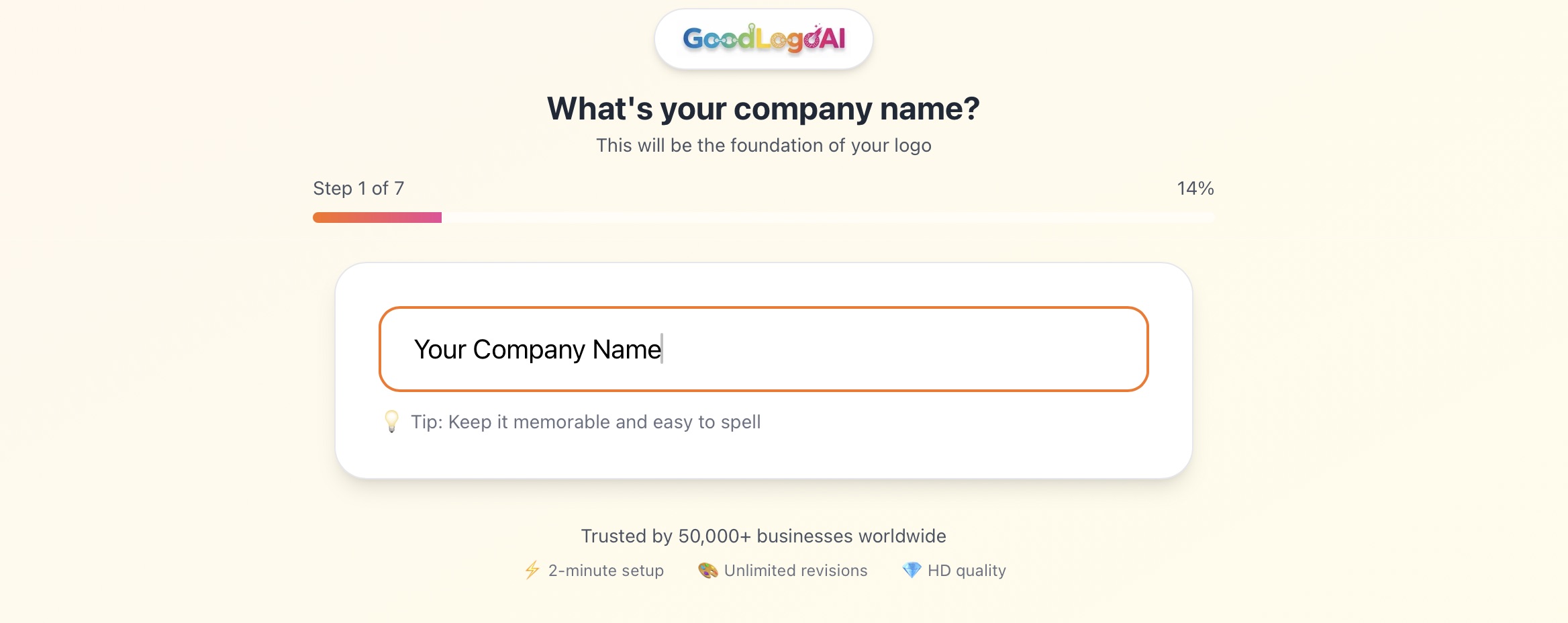
Tell the AI about your products: What do you sell? Who's your target customer? What's your price point? Include your brand personality (luxury, fun, eco-friendly, etc.)
💡 Tips:
- Specify your product category (fashion, beauty, home, tech, etc.)
- Mention your target demographic (age, gender, style preferences)
- State your positioning (budget, mid-range, premium, luxury)
- Include brand personality keywords (modern, vintage, playful, sophisticated)
AI Generates Your Logo
30 seconds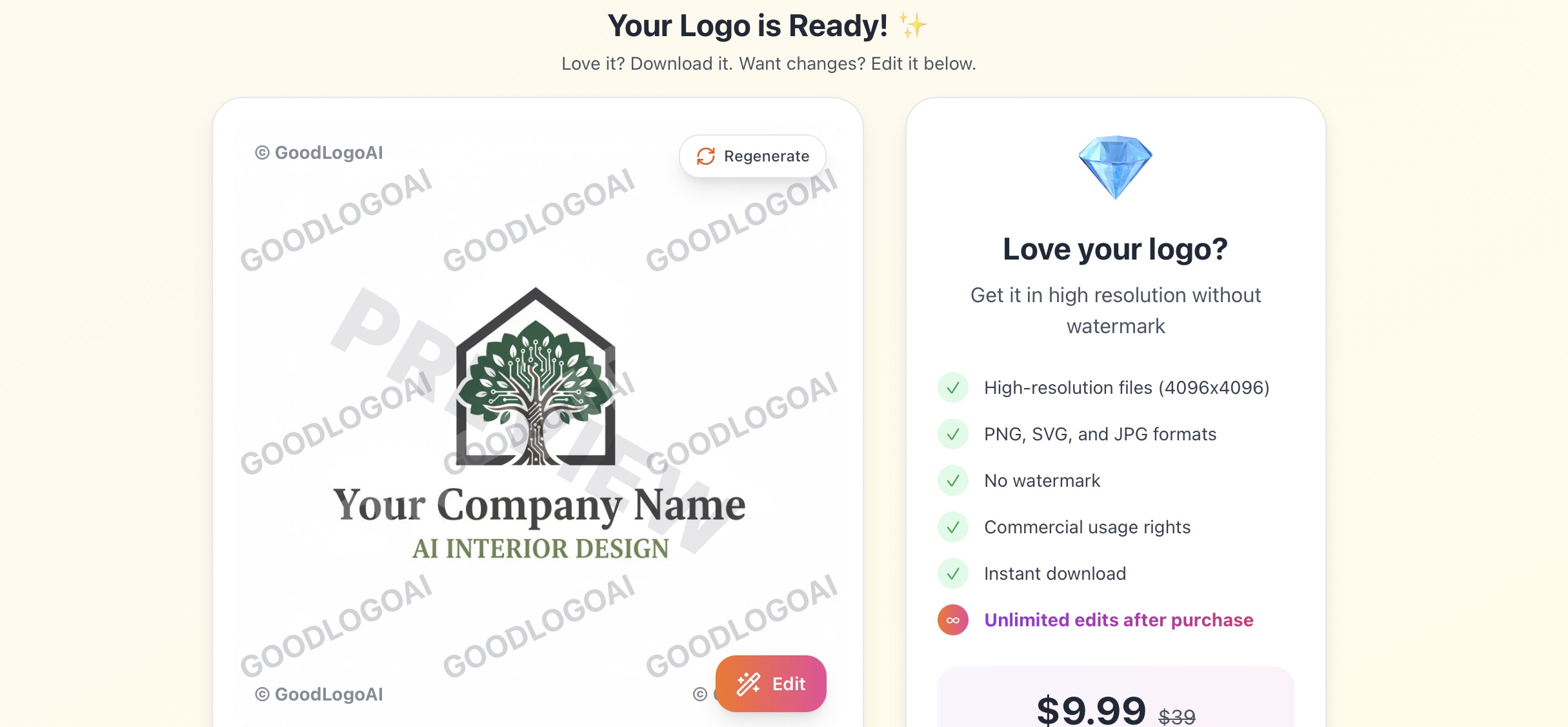
Our AI analyzes successful e-commerce brands in your category and creates a logo optimized for online stores. It considers mobile viewing, packaging, and social media.
💡 Tips:
- AI uses e-commerce conversion best practices
- Colors are chosen based on product category psychology
- Design is tested for mobile and small-size visibility
- Style matches your target market expectations
Customize with AI Edits
30 seconds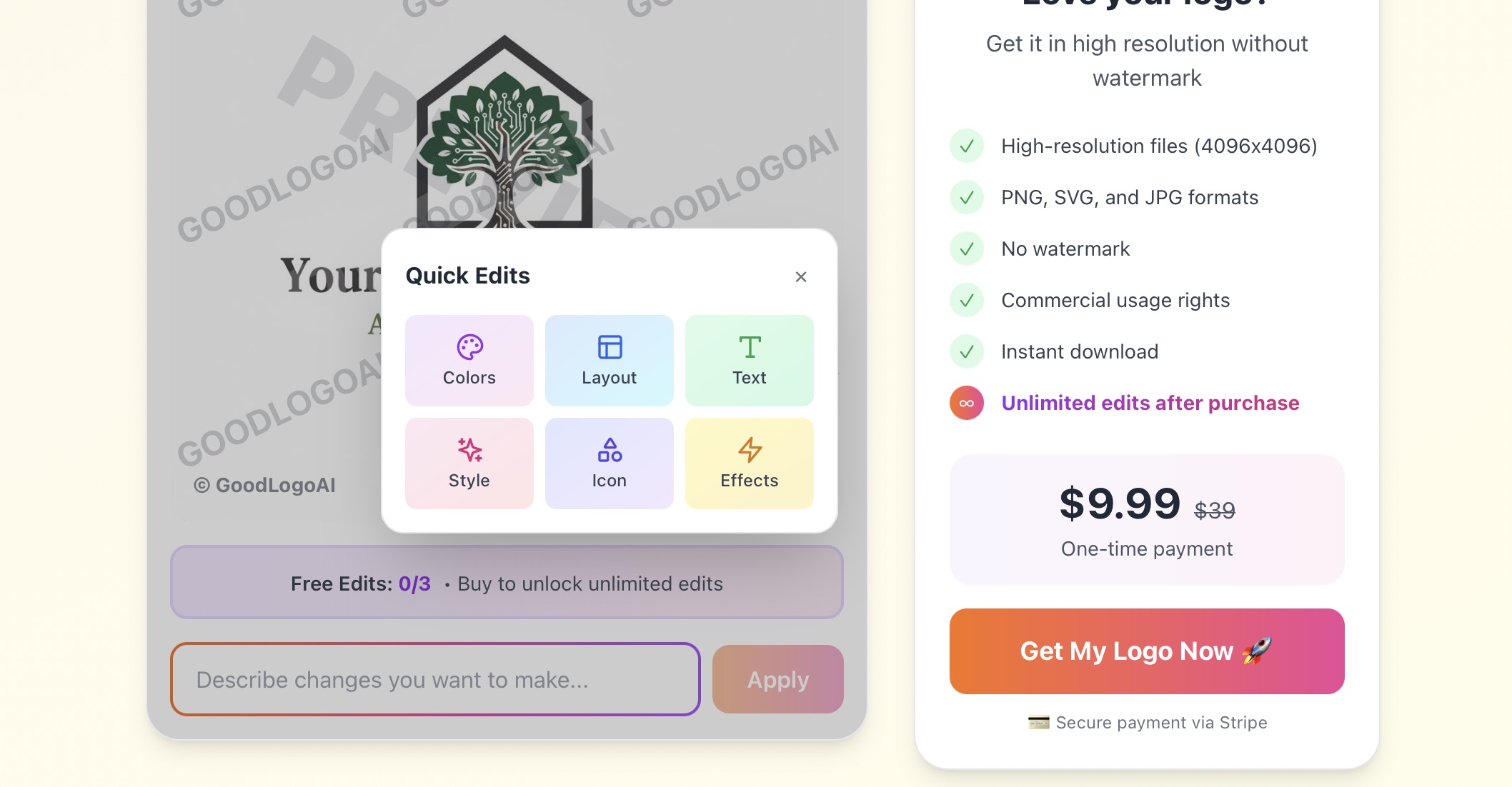
Not perfect? Tell the AI what to adjust: 'make it more luxurious', 'use pink for beauty products', 'simpler for small sizes'. It understands e-commerce design language.
💡 Tips:
- Try 3 times completely free
- Test how it looks as a tiny social media icon
- Request both color and black-only versions
- Ask for variations (icon, full logo, horizontal)
Download & Start Selling
30 seconds
Pay $9.99 one-time and instantly download all formats: high-res for packaging, web-optimized for your store, print-ready for labels. Perfect for Shopify, Etsy, Amazon, and more.
💡 Tips:
- Get packaging-ready files (high-res PNG, print PDF)
- Web-optimized files for your online store
- Social media sizes (profile pics, covers)
- Full commercial rights—use everywhere
✨ Try 3 times free • Only $9.99 to download
Trusted by E-commerce Store Owners
"Launched my Shopify store with a logo from GoodLogoAI. Customers say it looks professional and trustworthy. Already hit $10K in sales!"
Maria Santos
Founder, Bella Beauty Shop
"Needed a logo for my Etsy shop that works on product photos and packaging. Got exactly what I needed in 5 minutes. Saved me hundreds!"
David Kim
Owner, Minimalist Home Goods
"As an Amazon seller, my brand logo needed to stand out. GoodLogoAI made it simple and my conversion rate went up 15%!"
Jessica Taylor
Amazon Brand Owner
Different Styles, Same Professional Quality
From luxury to playful, our AI creates logos that match your products and customers

Luxury
Style

Modern
Style
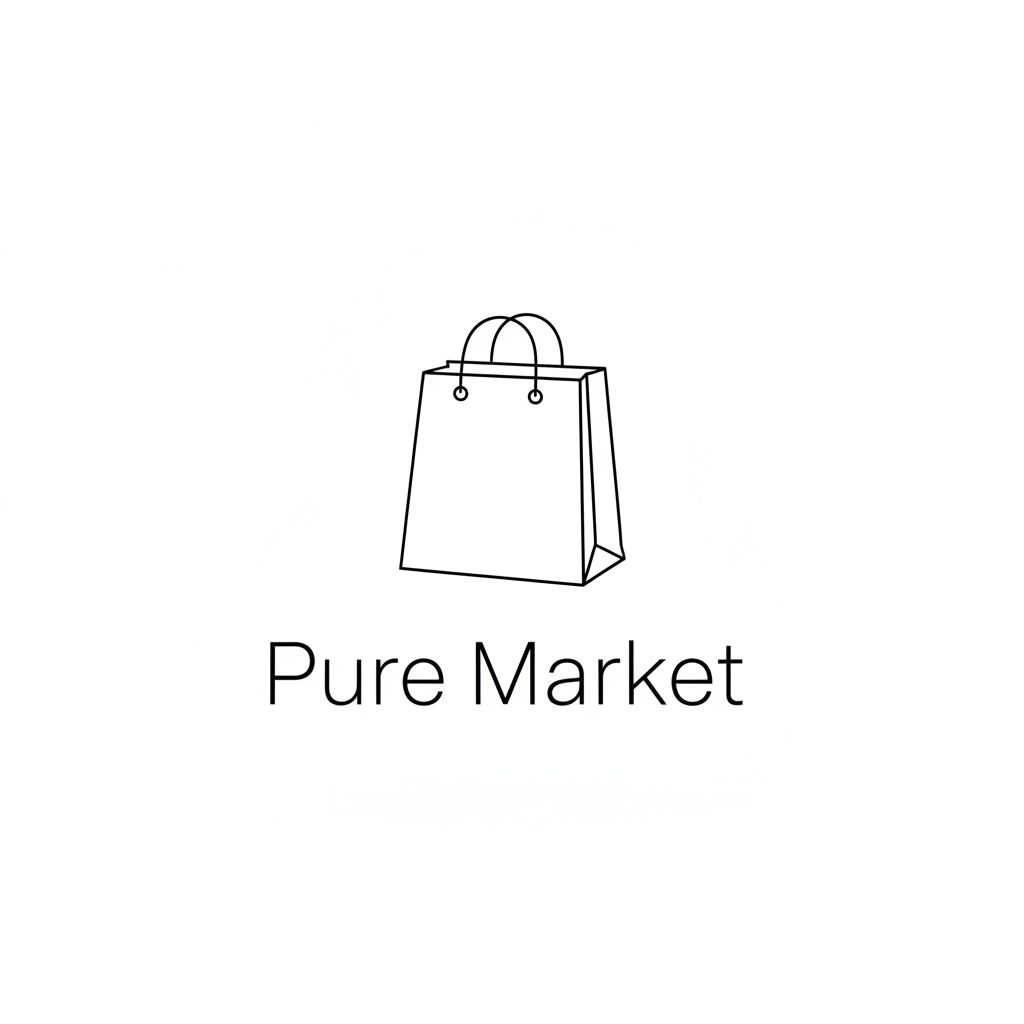
Minimal
Style
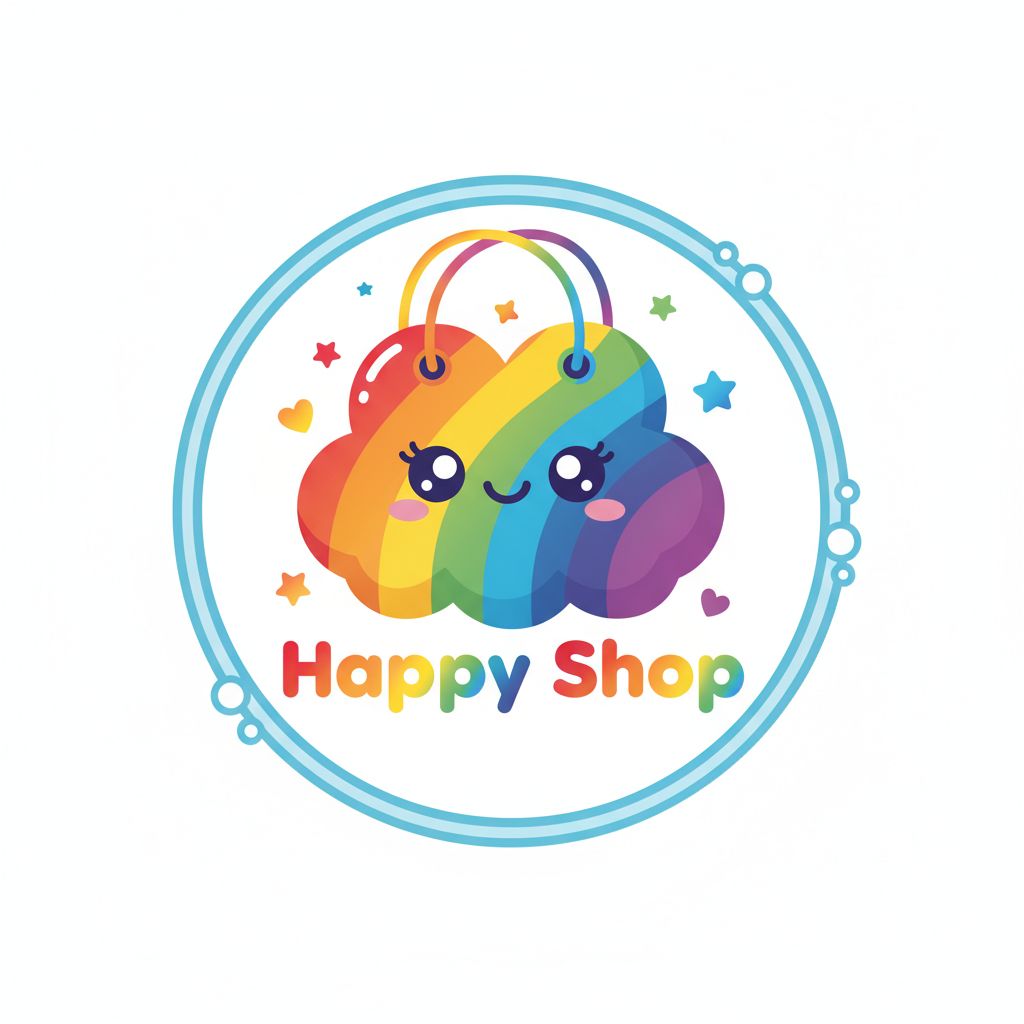
Playful
Style
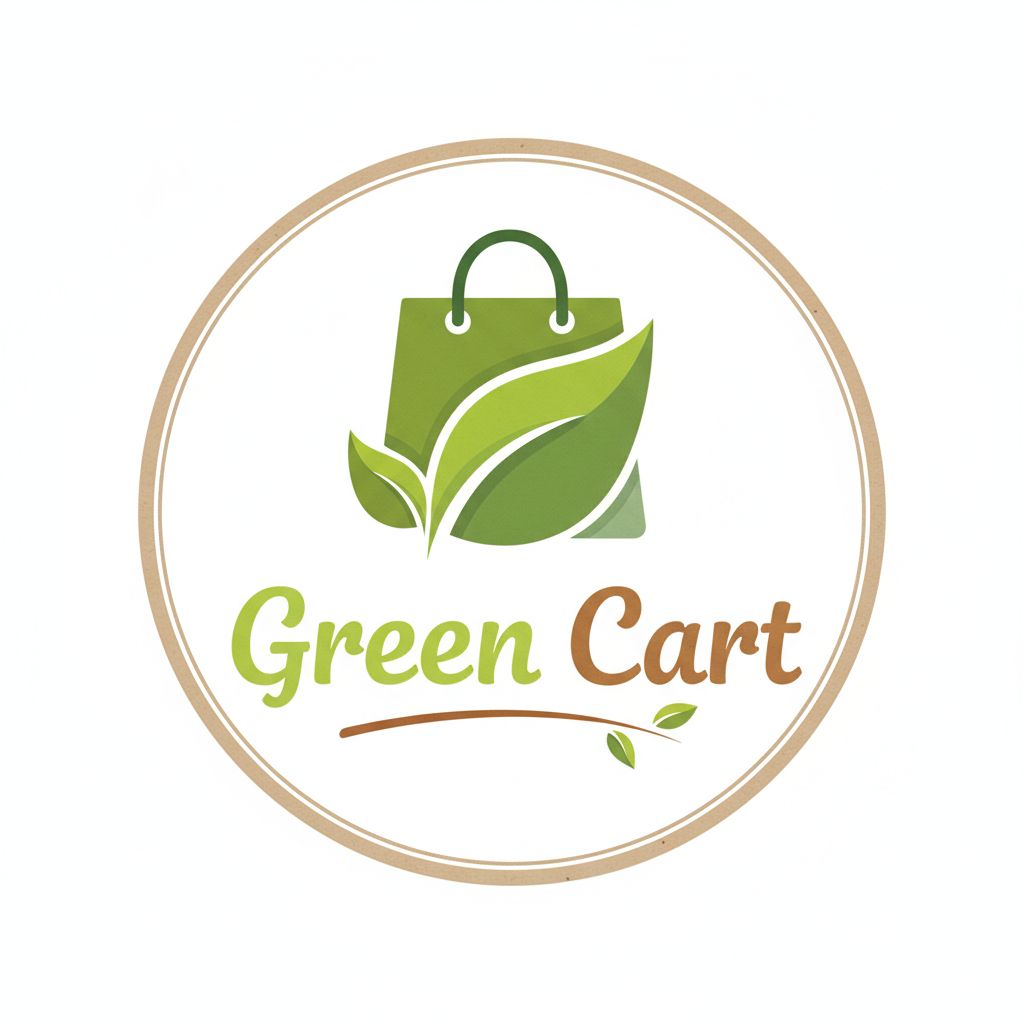
Elegant
Style
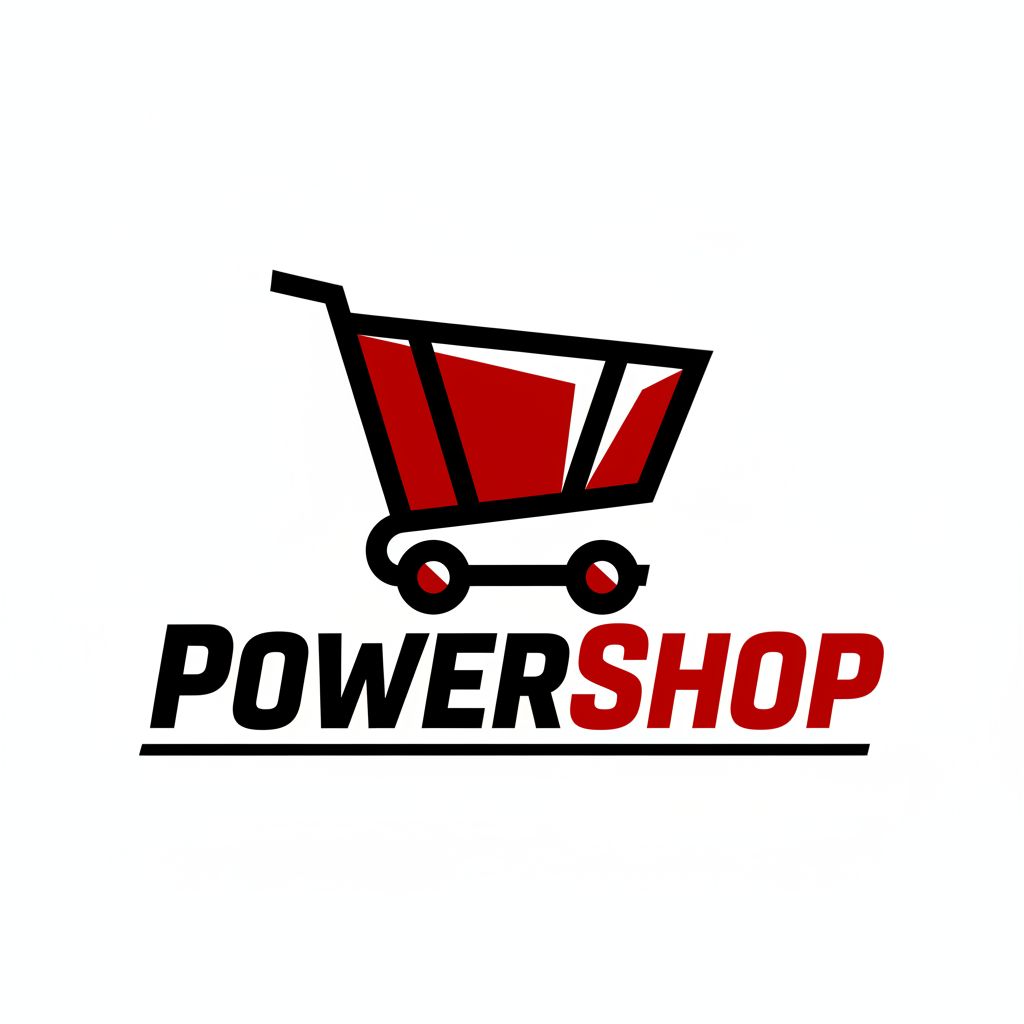
Bold
Style
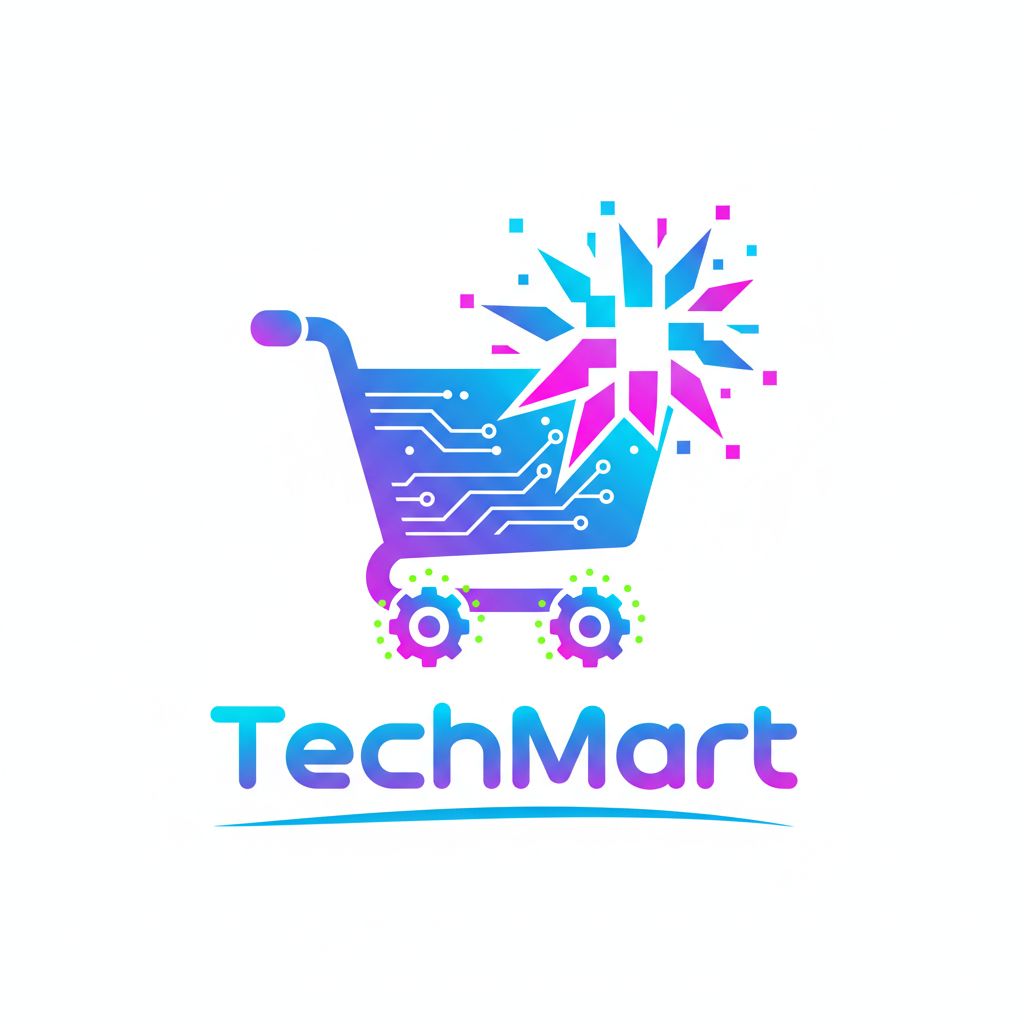
Natural
Style
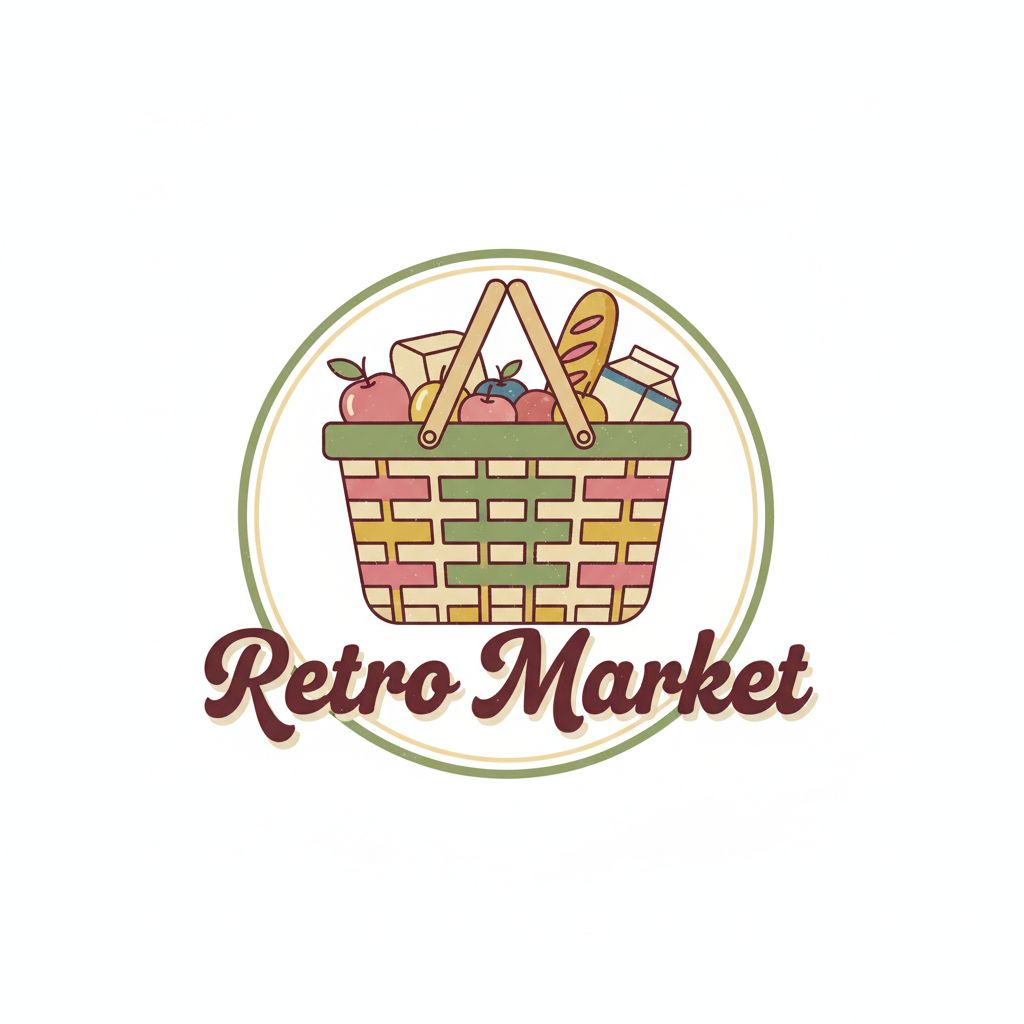
Vintage
Style
Frequently Asked Questions
Everything you need to know about e-commerce logo design
Q:What makes an e-commerce logo different from other logos?
E-commerce logos must build trust instantly (customers can't meet you in person), work at tiny sizes (social media, mobile apps), look professional on packaging, and convert browsers into buyers. They need to communicate legitimacy, product quality, and brand personality all at once—more than any other logo type.
Q:What colors work best for e-commerce logos?
It depends on what you sell: Black for luxury products. Blue for trust (electronics, general stores). Red/orange for urgency and impulse buys. Green for organic/eco products. Pink for beauty and feminine products. The key is matching color psychology to your products and target market.
Q:Should my e-commerce logo include a shopping cart or bag icon?
No. These are overused clichés that make you look generic. Think about successful online stores: Amazon, Etsy, Warby Parker, Glossier—none use shopping symbols. Create something unique that represents YOUR brand, not just 'online shopping' in general.
Q:Do I need different logo versions for my online store?
Yes! You need: 1) Square icon for social media profiles, 2) Horizontal logo for your website header, 3) Stacked version for packaging and business cards, 4) Black-only version for economical printing. Most e-commerce businesses use 3-4 logo variations regularly.
Q:How do I make sure my logo works on packaging?
Test it: 1) Print at actual size on paper and tape to a box, 2) Convert to black-only and see if it still looks good, 3) Check if it prints clearly at 1 inch wide, 4) View from 10 feet away. If it passes all tests, it's packaging-ready. If not, simplify.
Q:Can I use the same logo for my Shopify store, Amazon storefront, and Etsy shop?
Absolutely! In fact, you SHOULD. Brand consistency across platforms increases customer recognition by 80%. Use the same logo everywhere—just adapt the format (square for profiles, horizontal for headers) as needed.
Q:How much should I spend on an e-commerce logo?
Starting out: $10-100 (AI logo makers like GoodLogoAI are perfect). Profitable store ($50K+ annual revenue): $500-2,000 (freelance designer). Established brand ($500K+ revenue): $5,000-20,000 (agency with full brand system). Start affordable and upgrade as you grow.
Q:Will an AI-generated logo look unprofessional?
Not if it's done right. GoodLogoAI uses design principles from successful e-commerce brands and creates logos specifically optimized for online stores. Many successful Shopify stores use AI-generated logos. What matters is that it looks professional, not how it was made.
Q:What file formats do I need for my e-commerce logo?
You need: 1) High-res PNG with transparency (for your website and digital use), 2) Vector SVG or PDF (for packaging and print), 3) JPG (for documents and some platforms), 4) Multiple sizes (favicon 32x32, social media 512x512, etc.). GoodLogoAI provides all of these automatically.
Q:Should I rebrand my e-commerce store if my logo looks dated?
Maybe. Ask yourself: Is my current logo hurting sales? Do customers trust it? Does it work on mobile and social media? If you're losing sales due to unprofessional branding, rebrand. But if sales are good and you just want something 'cooler,' focus on marketing instead. Rebranding is expensive and can confuse loyal customers.
Create Your Professional E-commerce Logo Now
Join 8,000+ online store owners who created their logos in minutes.
✨ Try free • No credit card • $9.99 to download • 30-day guarantee